A good friend of mine from Fredricksburg, Texas, proudly wears the mantle of “former biology nerd.” Now and again, Mick McCorcle pulls out one of his microscopes and takes a detailed look at various fly-tying materials.
“One cold winter day,” he told me, “I pulled out some peacock herl and began to examine it under increasingly higher magnification. At each level, the herl was iridescent. As the magnification got higher, the field of view got smaller, but the iridescence was still evident. No matter how high the magnification, the iridescence never dulled.”
Most seasoned fly anglers, particularly those who appreciate more traditional patterns that aren’t named after nuclear accidents or anabolic steroids, know that peacock herl possesses a bit of inexplicable mysticism. Fish, particularly trout, seem to really love it.
And it’s a staple among the tying community. It usually turns up in its natural “insect green” color, but tyers often use dyed versions of the long, supple feathers in all kinds of patterns. I’ve seen peacock herl show up in all kinds of flies, from revamped stimulators to long, snaky pike patterns. But there are a handful of flies where the herl is considered more of the main event — the ingredient upon which the rest of the pattern is based.
Here are five well-known flies that use peacock herl as a foundational material. And, given the iridescence of the peacock herl that McCorcle describes, it’s safe to say that the flies are common because the herl makes them work.
The Royal Coachman
First tied as a wet fly (and I still tie a wet Coachman today — it seems to open trouty lips that might otherwise stay closed on rivers like the Firehole and the Gibbon in Yellowstone National Park), the Royal Coachman today is generally considered an attractor dry pattern.
The fly, according to Favorite Flies and Their Histories by Mary Orvis Marbury (1892), was first tied in 1878 by John Haily in New York City. The fly features upright wings (either white calf tail or white hen neck, hackle points … anything that can be tight upright and easily seen by the angler), and a half-dozen wraps of tight brown or red-brown hackle. The tail is usually golden pheasant fibers, but I’ve seen it tied with elk hair, deer hair or even hackle fibers.
But it’s the distinctive body that never changes. According to Haily’s description of the fly, he used peacock herl because of its appeal to trout, and he secured the delicate herl using a few wraps of red silk to make the fly more durable for an angler heading to the North Woods in search of brook trout.
A lot of ingredients have found their way into the Royal Coachman over the years, but the use of peacock herl is required. Without it, the fly is not a Royal Coachman. Some tyers substitute yellow or orange floss in for the wraps of floss to secure the herl, but the herl is what makes the fly the Royal Coachman.
Royal Wulff
This is a very similar fly to the Royal Coachman, but it’s tied Wulff-style with a hair wing. It bears Lee Wulff’s name — the famous fly fisher collaborated with Dan Bailey in the 1930s on a host of hair-winged flies. Bailey encouraged Wulff to give the various patterns his name, so flies like the Gray Wulff, Black Wulff and White Wulff all use the hair-wing tying method.
But the Royal Wulff is distinctive in that it features the tell-tale green peacock herl secured to the hook shank with a dividing section of red silk. The fly’s tail can be anything from elk hair to hackle fibers, but the peacock herl is the foundational ingredient in the fly tied to float high and proud on western trout rivers.
Like the Royal Coachman, the Royal Wulff is still a staple in dry-fly boxes the world over.
Griffith’s Gnat
This uber-simple dry-fly pattern is perhaps the most-famous midge cluster pattern ever tied. First tied by Trout Unlimited patriarch George Griffith in Michigan, the fly really only has two ingredients and is usually tied on hooks ranging in sizes 18-22.
The body of the fly is tightly wrapped peacock herl secured with equally tight wraps of grizzly hackle. It’s meant to imitate a group of floating midges that “cluster” together on the surface, and it’s a staple for dry-fly anglers who fish midge hatches on trout rivers everywhere.
Again, without the peacock herl, the fly is not a Griffith’s Gnat.
The Prince Nymph
First tied in California in the 1930s by tyer Doug Prince, this attractor pattern has endured some evolution from its early iterations. First tied without a bead and meant to imitate caddis or larger mayfly larvae, the Prince is now a staple in nymphers’ fly boxes.
Today, it’s almost always tied with a heavy brass or tungsten bead, brown and white goose biot fibers and, of course, peacock herl for the body. Most Prince Nymphs are also weighted by lead or tungsten wire wrapped around the hook shank before the other ingredients are tied in.
In larger sizes — sizes 8-12, for instance — the Prince is an impressionistic stonefly imitation. In smaller sizes, its bright ingredients are attention grabbers, and it’s a solid option for nymphers who use it as a searching pattern as the lead fly in a two-fly nymph rig.
I’ve used larger sizes for everything from Henry’s Fork browns and rainbows, and even for steelhead on the Salmon River in central Idaho. Like the other flies listed, the peacock herl is the staple ingredient, although, interestingly, the fly was first tied using ostrich herl.
The Peacock and Partridge
This venerable wet fly is tied in the soft-hackle tradition using a Hungarian partridge feather preened and wrapped rearward over a body of peacock herl. It’s a simple fly that’s been used for generations, and it’s fairly easy to tie at the vise.
In sizes 14-18, it’s a killer soft-hackle on my home rivers here in eastern Idaho. The native cutthroat trout in the South Fork of the Snake love to hit soft-hackles, and, when tied with just a bit of weight in the form of thin, brass wire, the Peacock and Partridge swings out and up in the water column. If it’s going to get eaten, it’ll happen just as the currents starts to swing the leader, and the fly starts to move up near the surface.
Again, the peacock herl is the main ingredient, and always has been on this wet fly.
The shine and the sheen
To my knowledge, it’s never been proven, save for countless anecdotal examples from fly fishers everywhere, that peacock herl is a fish attractant. I do know that I’ve flies tied with peacock herl work when others simply don’t, but that’s hardly scientific.
I do believe, though, that McCorcle is onto something with his microscopic work. Peacock herl glows like no other ingredient. The fact that it’s found its way into so many patterns — and the fact that so many patterns use it as the lead actor — is enough for me to confidently claim that it just works.
Maybe it is the shine and the sheen. Or maybe it’s just that it’s buggy as hell. Either way, it’s a staple on any tying bench, and its time-honored use in countless fly patterns is likely all the evidence the average fly fisher needs.




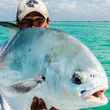

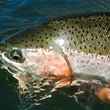




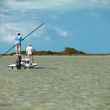





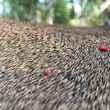




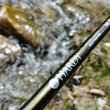



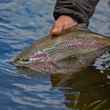
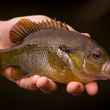





Comments
Russell Symons replied on Permalink
On this side of the pond there is a very important fly called the Diawl Bach(Welsh for Little Devil, so I am told) and it worked very well for me in the Rockies a few years ago after a Denver show. Apart from a few little bits of hackle the fly is entirely Peacock Herl. In recent times we have ribbed it with fine red holo tinsel which seems to enhance its attraction. Sizes 12 and 14 work best for us. Fish it with minimal movement. Enjoy!
andrew.winton replied on Permalink
Very surprised you didn't include the UK's classic black and peacock spider
Jack Edwards replied on Permalink
I once read that peacock herl is one of the few natural fly tying materials that reflects UV light. This could be the magic ingredient that attracts fish. You might want to query the scientific community on this for a true evaluation.
Pages